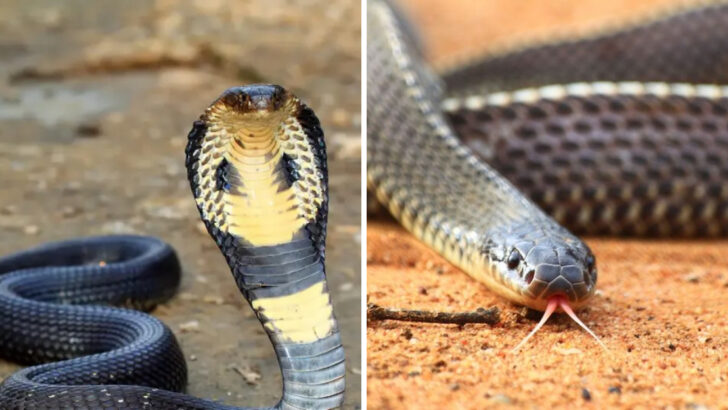One bite from either could end you—fast. But put them face to face, and you’ve got a cold-blooded clash for the ages.
The black mamba is speed, fear, and venom wrapped in shadow.
The king cobra? A towering serpent with enough neurotoxin to drop an elephant and the nerve to stand tall while doing it.
This isn’t just a snake fight.
It’s a venomous showdown dripping with tension, strategy, and ancient predator instinct.
Two icons. Zero mercy.
So what happens when Africa’s fastest killer meets Asia’s reigning reptile monarch?
Sixteen traits tip the scales in this silent, slithering war—and one snake walks away the legend.
First Strike Advantage
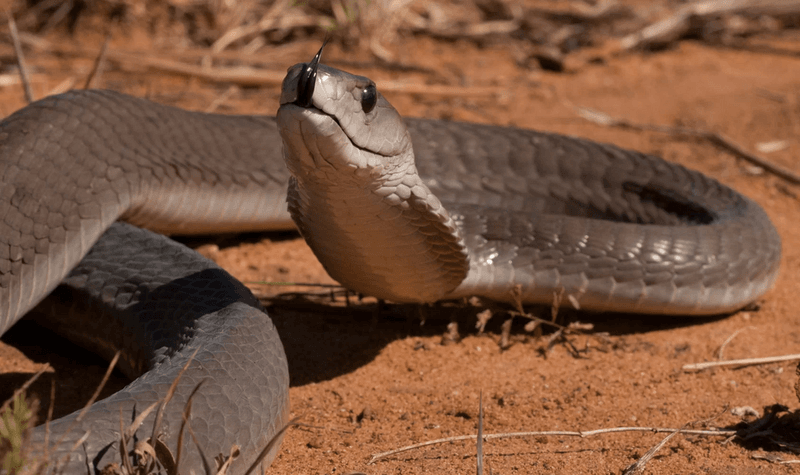
The Black Mamba is renowned for its lightning-fast strike. With remarkable agility, it can deliver a venomous bite within a fraction of a second. This speed gives it a significant advantage in combat situations. In the sweltering heat of the African savannah, this serpent’s speed is its ultimate weapon.
Swift and precise, the Black Mamba doesn’t hesitate. Its venom is potent, making each strike potentially lethal. With quick reflexes, it can evade threats and attack with precision. The element of surprise is its ally.
King Cobra’s Intimidating Hood
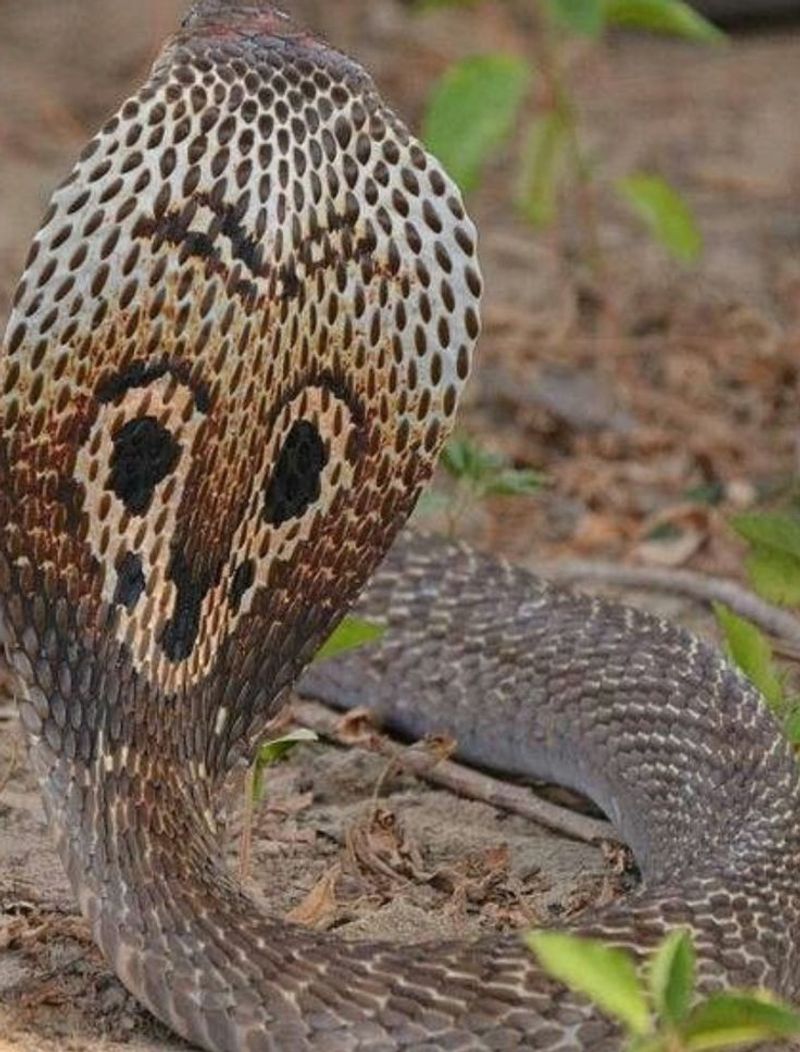
The King Cobra is famous for its impressive hood display. When threatened, it expands its hood, creating a fearsome spectacle. This behavior is not just for show; it’s a defense mechanism designed to ward off predators.
The hood’s patterns are mesmerizing, showcasing the snake’s elegance and power. Standing tall, it commands respect. Its gaze, fierce and unyielding, matches its formidable presence. With an air of regality, the King Cobra’s hood is both a warning and a declaration of dominance.
Venom Potency Comparison
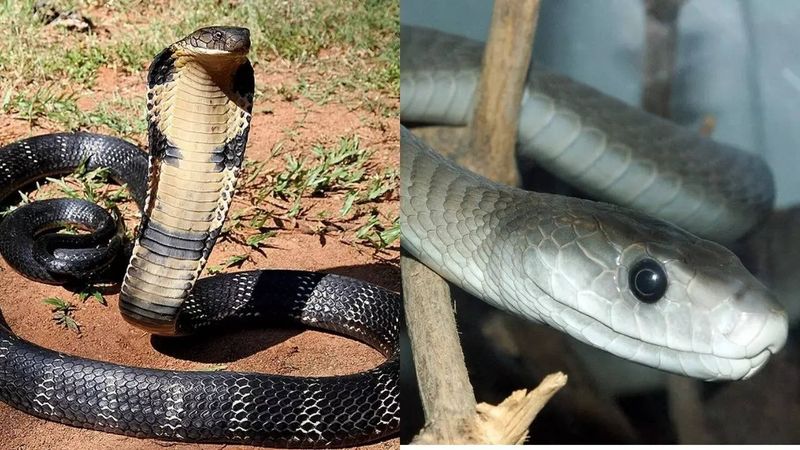
When comparing venom potency, both snakes are formidable. The Black Mamba’s neurotoxic venom acts swiftly, targeting the nervous system. In contrast, the King Cobra’s venom, though less potent per drop, is delivered in larger quantities.
Each has evolved unique venom for survival and predation. The Black Mamba’s venom causes rapid paralysis, while the King Cobra’s affects the heart and respiratory system. These differences highlight their specialized hunting strategies and ecological roles.
Habitat Differences
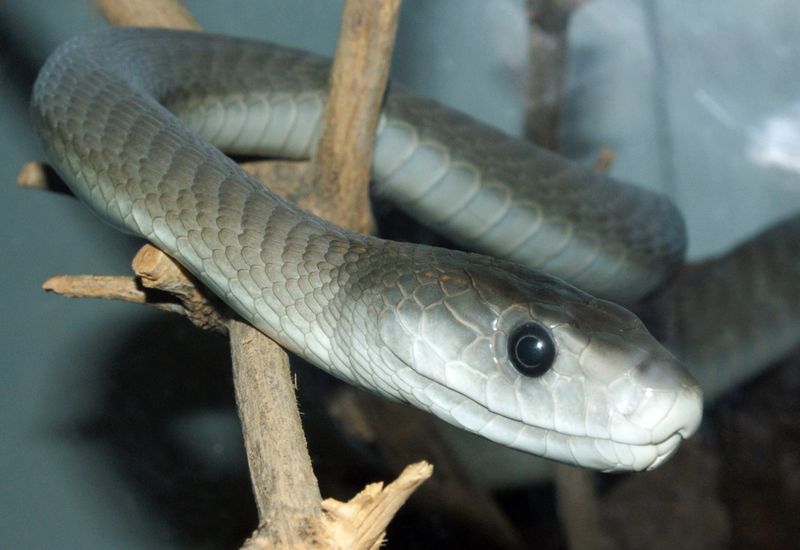
Habitat plays a crucial role in the lives of these snakes. The Black Mamba thrives in the open terrains of Africa, where speed and stealth are vital. Its environment is vast, allowing it to roam freely.
Conversely, the King Cobra resides in the thick forests of Southeast Asia. Its jungle home is dense, requiring keen senses and adaptability. These habitats shape their behavior, hunting techniques, and survival strategies, making each snake uniquely suited to its domain.
Dietary Preferences
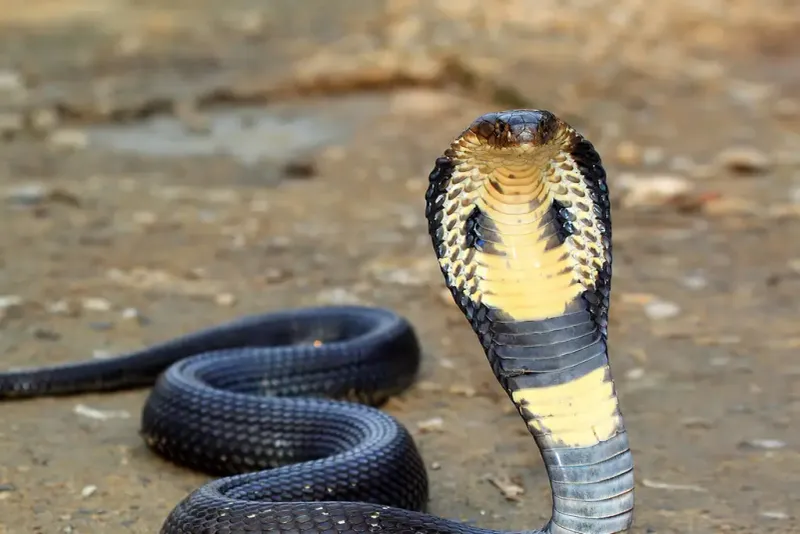
Diet reveals much about each snake. The Black Mamba primarily preys on small mammals and birds. Its speed aids in capturing swift prey, showcasing its adaptability and hunting prowess.
The King Cobra, however, has a more specialized diet, often consuming other snakes. This ophiophagous behavior demonstrates its dominance in the food chain. Each snake’s dietary choices reflect its ecological niche and evolution over time.
Size and Length
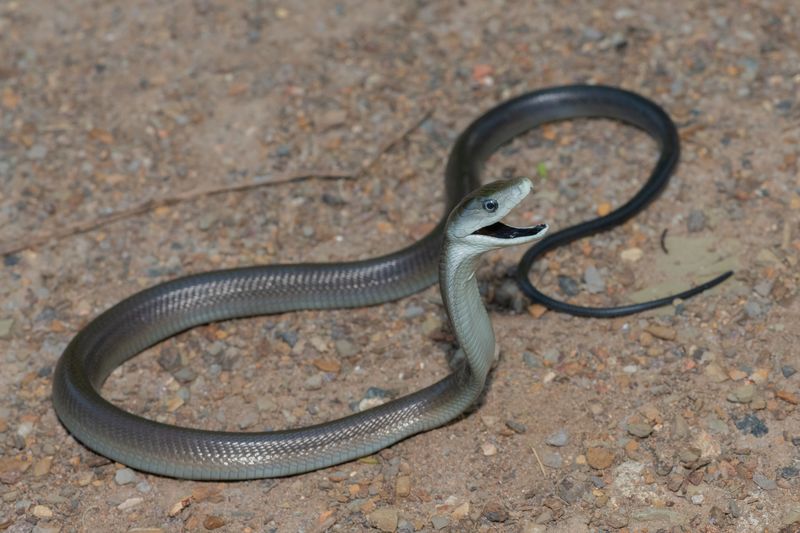
Size can determine dominance in the wild. The King Cobra, the world’s longest venomous snake, can reach up to 18 feet. Its length is an advantage in both intimidation and combat.
The Black Mamba, although shorter, is still impressive, reaching lengths of up to 14 feet. Its slender, agile body compensates for its lesser size. These measurements underscore their imposing presence and adaptability in their respective environments.
Reproductive Strategies
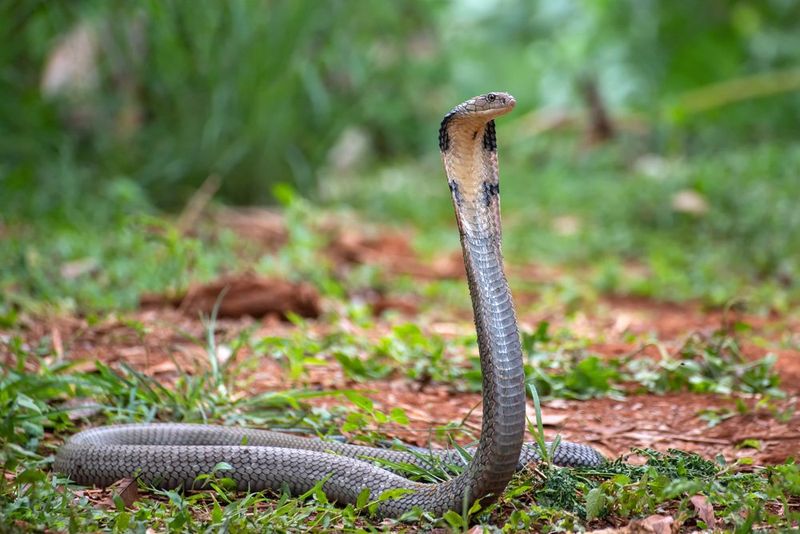
Reproduction varies between these snakes. The Black Mamba lays eggs in hidden burrows, leaving them to hatch independently. This strategy reduces predation risks.
In contrast, the King Cobra exhibits parental care, building nests and guarding eggs until they hatch. This behavior is rare among snakes. Such differences highlight their unique life strategies and survival tactics, reflecting evolutionary adaptations to their environments.
Defensive Behaviors
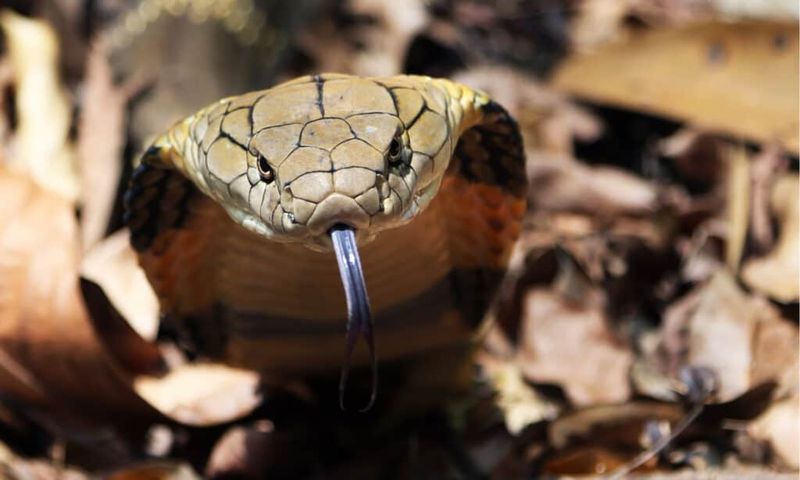
Defense is vital for survival. The Black Mamba prefers flight over fight, quickly retreating from threats. Its speed and agility are its main defense mechanisms.
In contrast, the King Cobra stands its ground, using its hood and size to intimidate. It prefers confrontation when necessary. These contrasting behaviors illustrate their differing approaches to threats, shaped by their environments and evolutionary histories.
Cultural Significance
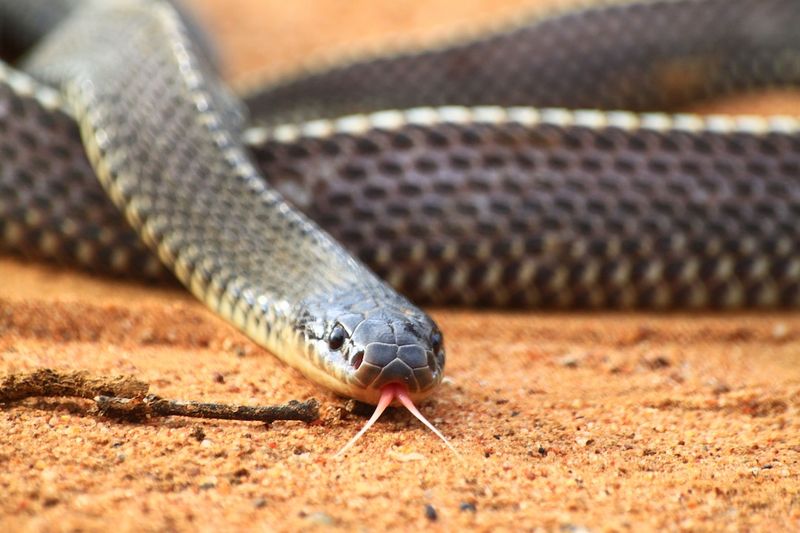
Both snakes hold cultural significance. In Africa, the Black Mamba is often feared and revered, symbolizing both danger and power. Its presence permeates folklore and traditional stories.
The King Cobra holds a revered status in Indian culture, often associated with deities and spiritual symbols. Its majestic presence is woven into myths and legends. These cultural representations highlight the snakes’ impact on human societies throughout history.
Interaction with Humans

Human interaction varies. The Black Mamba is often avoided due to its aggressive reputation, leading to encounters that are usually brief and cautious.
Conversely, the King Cobra is sometimes used in traditional snake charming practices. Its regal appearance and cultural symbolism make it a fascinating, although risky, subject for human interaction. These interactions reflect differing human perceptions and relationships with each species.
Survival Tactics

Survival in the wild requires ingenuity. The Black Mamba relies on speed and camouflage to evade predators and hunt successfully. Its greyish color blends seamlessly with the African savannah.
The King Cobra utilizes its intelligence and adaptability to navigate complex jungle environments. Its ability to remain undetected is crucial for survival. These tactics reveal their mastery of their respective habitats and roles as apex predators.
Unique Physical Traits
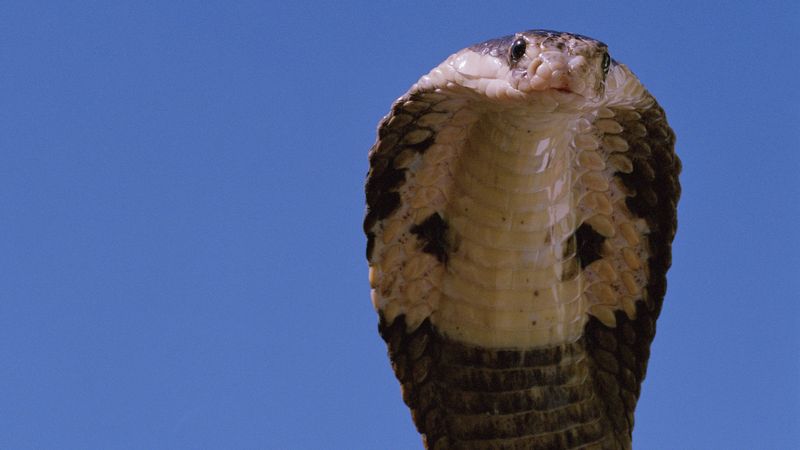
Physical traits distinguish these snakes. The Black Mamba’s smooth, olive-grey scales provide both beauty and functionality, aiding in camouflage and swift movement.
The King Cobra’s scales are distinct, with vibrant patterns that serve as both a warning and a disguise in the jungle. These physical characteristics enhance their survival and hunting efficiency, highlighting their evolutionary adaptations.
Predatory Instincts

Predation is an art for these snakes. The Black Mamba’s keen eyesight and rapid strikes make it a formidable hunter, especially in open spaces where agility is crucial.
The King Cobra, with its intelligence, can strategize and overpower prey, often targeting other snakes. Its calculated approach showcases its dominance as a top predator. These instincts are honed by evolution, ensuring their survival as apex hunters.
Lifespan and Longevity
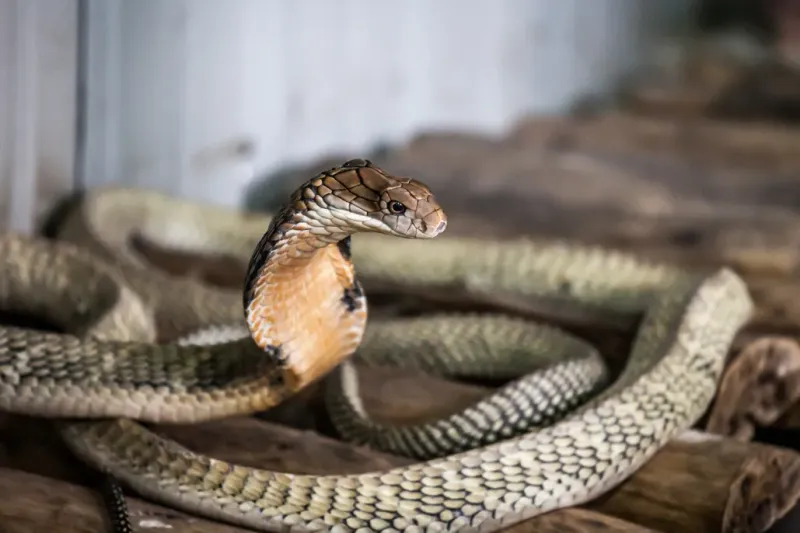
Longevity varies. The Black Mamba can live up to 11 years in the wild, its life shaped by speed and stealth.
The King Cobra, with a lifespan of 20 years, benefits from its intelligence and adaptability. These lifespans reflect their life strategies and adaptability. Each snake’s longevity is a testament to its survival skills and ecological niche.
Environmental Impact

Both snakes play key roles in their ecosystems. The Black Mamba helps control small mammal populations, maintaining balance in the savannah.
The King Cobra’s predation on other snakes regulates snake populations, preserving ecological harmony in jungles. Their presence ensures the health of their environments, showcasing their importance as apex predators.
Silent Stalker vs. Regale Ruler

The Black Mamba strikes fear with its silent stalking prowess. Known for its agility, it moves with a speed that leaves prey little chance for escape, earning its reputation as a stealthy killer. Meanwhile, the King Cobra commands respect with its regal posture and impressive size. As the world’s longest venomous snake, it combines intimidation with intelligence, often avoiding conflict unless provoked. In a clash, the Mamba’s speed would meet the Cobra’s strategic cunning, creating a spectacle of nature’s raw power. Both snakes embody the epitome of their ecosystems, making their hypothetical encounter a legendary narrative.

